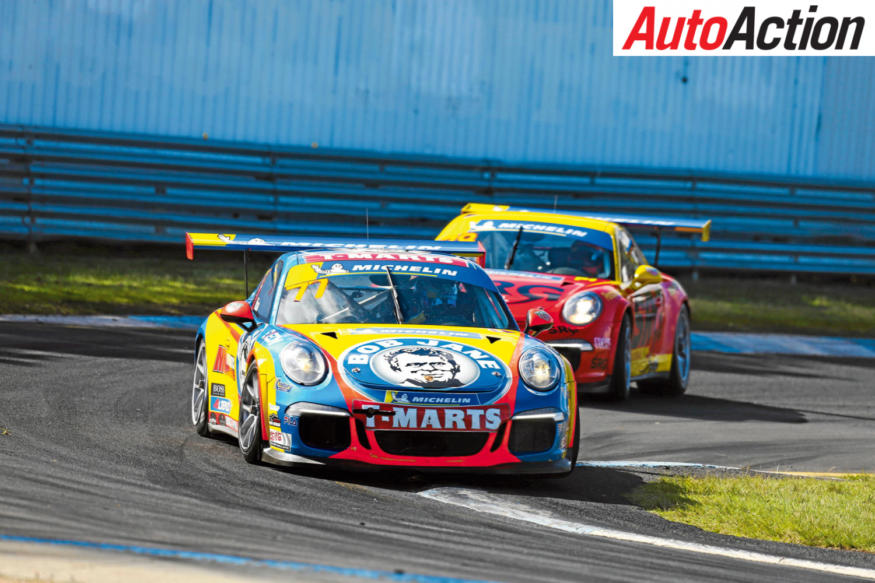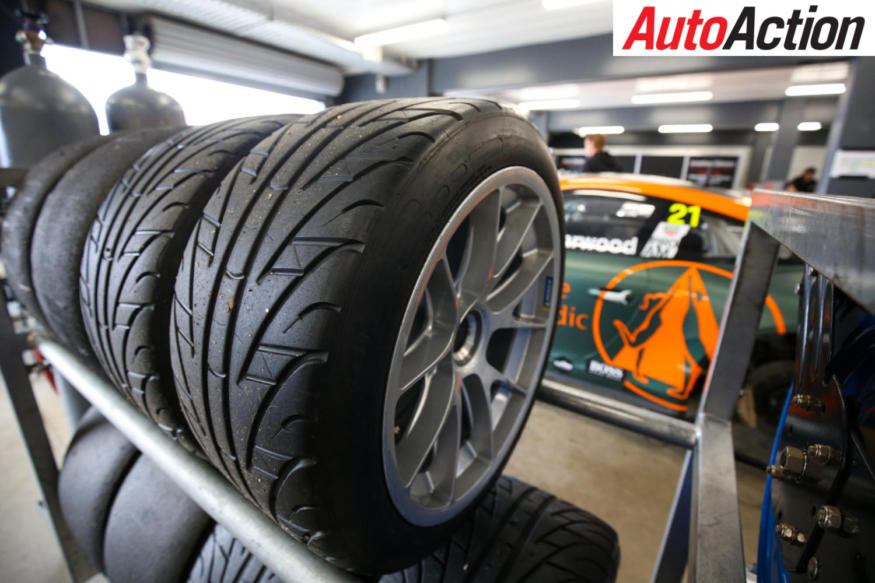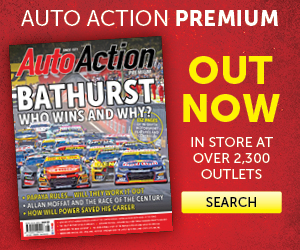THE COST OF RACING: PORSCHE SPRINT CHALLENGE

The Porsche Michelin Sprint Challenge is a proving ground for tomorrow’s talent while providing amateur competitors an opportunity to compete. Heath McAlpine discovers what it costs to get involved.

The recent spate of success of Australian and New Zealand drivers in Porsche racing worldwide has included one common component: the factory development program that takes place Down Under.
Australia is the only Porsche market in the world where Carrera Cup and Sprint Challenge run concurrently providing a unique opportunity for young drivers to develop in a second-tier category. Carrera Cup graduates of the category include factory Porsche driver and 2019 Bathurst 12 Hour winner, Matt Campbell, as well as Jaxon Evans and Jordan Love.
Competing within the Shannons Motorsport Australia Championships, the Sprint Challenge’s appeal extends to amateur racers not looking to a future in Europe, while others progress to the top-tier Carrera Cup supporting the Supercars circus.
Since 2008, the Sprint Challenge was run as the Porsche GT3 Cup Challenge, which was initially formed out of the previous Porsche Driver’s Challenge, a class run within the Australian GT Championship.
Businessmen Sven Burchartz and Jon Trende broke away to originate GT3 Cup Challenge in 2008 before Porsche took control to initiate the two-tier system that is currently in place.
Hoping to follow in their footsteps are reigning Sprint Challenge series winner Harri Jones, as well as Cooper Murray and Max Vidau, who have all recently progressed to Carrera Cup after promising performances.
“We find that both works really well for us because Sprint Challenge is actually our breeding ground or platform to develop drivers to go to Carrera Cup, which is at a high standard now that it is very difficult for someone to come in and go straight into it,” Porsche head of motor sport Troy Bundy told Auto Action.
“Sprint Challenge is the platform where people can compete in a less high-profile environment, learn how to drive the Cup Cars, learn the tracks, but still have the full support from Porsche. It is still a Porsche managed and supported program, but it’s just a more friendly development program.
“It’s a great platform for junior drivers to learn how to drive Cup Cars and move up into Carrera Cup, but it’s also a great environment for amateur drivers to learn how to drive as well.
“Some of the guys stay in Sprint Challenge because that’s where they want to be,” Bundy explains. “That’s the level that they see themselves at and others use it as a stepping stone to try and get to Carrera Cup.
“A lot of the young juniors use it as a stepping stone, Pro Ams use it as a learning tool,” he said.
Another unique aspect to the Sprint Challenge is the mixture between endurance and sprint events during the course of the year.
The Jim Richards Endurance Trophy usually takes place across two rounds during the six-event schedule.

Sprint Challenge caters to three classes: Pro, Pro-Am and Class B.
Pro is for the developing drivers hoping to emulate the likes of Campbell and Evans on the world stage; Pro-Am is designed for the amateur drivers, while Class B is only eligible to the previous model used outside of Pro and Pro-Am, which is currently the last 997 model.
This changes in 2022 when the new (992) Cup Car will come on stream for Carrera Cup, pushing the current model used into Pro and Pro-Am of Sprint Challenge, while the 991 Series I Cup Car moves into Class B.
Interested? Well, an eligible Porsche Cup Car is readily available from between $200,000-$230,000. That will get you a 991 Series I Cup Car, or for around $20,000 less you can get into a Class B entry.
The advantage of purchasing a Porsche is that the product is proven. Development and construction costs are virtually nil, given the four seasons of racing under the 991 model’s belt.
“It’s such a consistent product,” Bundy explained. “You can’t change the car. It’s controlled. The biggest challenge in motor sport with a lot of categories is that the car is a factor; how much money you’re prepared to spend becomes a factor whether you’re successful or not.
“That’s quite mitigated with us, because you can’t out-spend someone else unless you do it with staff and even then, there’s only so much you can do because you can’t really change the car.
“The development and growth of how to be successful in our cars is actually the driver and getting the set-up right, and that’s the key.
“So, when you enter the category, there’s no worry about having the right car, engine etc. There’s no worry about the car as a competition piece. The driver just has to worry about themselves and achieving the right set-up.”
During the category’s infancy many competitors ran their own entries, however as the professionalism has grown, Porsche specialist teams including McElrea Racing, Sonic Motor Racing Services, Ash Seward Racing, Wall Racing, Garth Walden Racing and Buik Motorworks who field multiple entries across all classes. Privateers are almost non-existent.
A privateer entry is still possible and Porsche Cars Australia provide significant assistance at each round.
“We’ve got a complete program we provide when it comes down to support,” described Bundy.
“On-track, we bring a B-double transporter to each race meeting, which holds every single part that you could think of. The best thing is for competitors that want to come along to our series is that they don’t have to buy $1000 worth of parts that sit in the truck just in case they might happen to need it. It’s all sitting in our truck instead.
“Competitors can turn up with very minimal parts and when they need parts, we’re there to support and help them. In addition to the truck being there with parts, attached to that is a parts expert and a technical and sporting manager as well, so we’re there to not only provide them with parts, but to help competitors fix the cars, give advice on how to repair and what they need to be careful.
“There’s a complete level of support we provide from technical support, on-track to parts support, we have full media and communications, video content, an operations person that helps competitors with Motorsport Australia, entry fees and admin.
We’ve got sponsorship and there’s even a coffee cart. It’s a full turnkey support program.
“It’s a large investment by Porsche to bring the truck to the track every race meeting, coupled with a whole range of expertise in staff, who will support them for every event.
“The amount of content we produce for our customers is amazing and if they did it on their own it would cost a fortune,” Bundy adds.
This extends to technical information away from the track. A Porsche portal provides all the technical information to service and repair items properly, while staff are available to chat if need be.
“Competitors get a range of technical information online so, depending on what they are looking for and what they need, it’s on the Porsche portal.”
“On top of that, if competitors are unsure, we have dedicated motor sport staff, who can be contacted to answer any questions or provide advice.”
All this is included in the $11,000 full season early bird entry, while entering solely round-by-round is approximately $2000 mark. However, Porsche is flexible in terms of the number of rounds competitors run and implementing a payment plan.
For junior drivers, Porsche’s supports these through its Michelin Junior Driver program, which through Carrera Cup and Sprint Challenge offers $300,000 worth of prizes altogether.

These include free entry for each Sprint Challenge round winner and a free set of Michelin tyres, while both second and third receive the latter.
Other initiatives for young drivers include workshops focusing on nutrition, training, public speaking, sponsorship presentation, social media and conversations with leading sportspersons discussing performance culture and mindsets.
As an amateur driver, Ross McGregor joined Sprint Challenge in 2013 after several seasons in Commodore Cup.
Currently, he drives a 991 Series I Cup Car in Pro-Am with preparation handled by Ash Seward Motorsport, and is impressed by the package.
“It’s a great car, really well manufactured,” McGregor explained. “The people at Porsche are great to deal with and personally I think it’s the best category in Australia because it is a one-make formula in exactly the same car.
“They are very meticulous in making sure everything is the way it should be. They check the cars all the time, data is checked and in the seven years I’ve been in there, no competitor has been caught flouting the rules.”
McGregor bought his first Porsche from GT driver Ross Lilley and has progressively upgraded through Seward, who has handled the purchase and sales transactions.
“We’d been looking for a new one and Ash got it organised,” explained McGregor. “He sold my car to somebody, then we had a new car in the wings.
“The good thing is, the cars are still reasonably valuable when they are eight years old because the people who want to get into the category are willing to buy them and have a run, which I did.
“You’ve got to outlay more money to get into the next car, but you’re just stepping up from the next person who is stepping down, so providing you can afford the expense of motor sport, it’s really an easy transition into the new model each time.
“You basically buy [the next car] with all the gear that is needed for that car. When you pass yours on, you include the bits and pieces for it.”
McGregor didn’t start his Sprint Challenge campaign with Seward, but it wasn’t long before he joined the Melbourne-based team, and he suggests that top team McElrea Racing could make him any faster than he currently is at ASM.
“Ash is more economical than going with McElrea, but he’s just as invested in what you’re doing, maybe more, because he runs less people,” McGregor said.
Porsche’s reliability is evident in that McGregor has suffered no mechanical failures in the category, however he admitted servicing can be expensive.
His advice is that if the car is maintained properly, less pain will be experienced.
“When the gearbox needs rebuilding, it gets rebuilt; an expensive process. If the engine needs rebuilding, it’s rebuilt and also an expensive process, but it’s all done by the Porsche book, in which case when I get the car, I know that it’s all been lifed as it should be and you continue to do it,” McGregor said.
“When the next person gets it, they’ll have the value of that.”
To run a round with a team, it costs between $15,000-$20,000 depending on the team. McElrea Racing is at the top-end, but as team owner Andy McElrea explained, there are a number of additions to better to prepare the team’s driving roster.
“Arrive and drive is $20,000 per round,” McElrea told Auto Action.
“This includes preparation, transport, data, driver coaching, accommodation with the team, meals with the team and full immersion as a developing driver.”
Items not covered are the entry list, Michelin tyres and crash damage.

McElrea credited Porsche for the way it runs the series and its support.
“The way Porsche Cars Australia run the series is an exceptional business model for teams like us because we don’t have to tie up capital with huge parts supplies,” explained McElrea. “Teams like us will carry a certain selection of our own parts but we don’t have to carry a whole lot like Super2 or Super3 operations.
“Porsche’s support of the series is outstanding.”
Servicing is simple, McElrea stating that engines last for three or four seasons, though oil changes take place after each meeting and spark plugs are changed once a season.
“The Porsche is exceptionally reliable,” stated McElrea. “Changing the oil and filter is important. We change the spark plugs once a season and that’s about it.
“They’ll do three to four seasons of hard racing and testing. It’s unbelievable.”
Pads cost $650 a set from Porsche, while a change in the rotor set-up allows competitors to fit the disc rather than the hat as well, which was previously a $2000 exercise. This cuts costs considerably, but changing these items is dependent on what the customer wants to get out of the program, meaning a driver fighting for the title will go through these components more regularly than an amateur, who replaces these items every three meetings.
“We get a racer’s discount from Porsche and we pass that onto the customer,” McElrea said. “Apart from that, it costs what it costs from Porsche and we receive some assistance from that, but it’s not a huge amount.”
The gearbox is also important as failing to maintain this item can prove to be an expensive oversight. The unit is sent to Holinger to be crack tested every 20-25,000km. This could be a $5000 or $35,000 bill depending on what damage is found.
Testing is also an added expensive to the tune of $5000, which includes track hire with McElrea Racing.
This does not include tyres. Two new sets per meeting at $3000 a set are required, while McElrea advises 14 sets are enough to see a competitor through the season.
McElrea Racing has a simulator at its disposal for drivers to prepare ahead of each meeting.
Leasing is also available through most teams, but most competitors own their Porsches. An end of season refresh costs $15,000-$20,000.
Compared to the previous categories covered in Auto Action’s ‘The Cost of Racing’ feature series, Porsche Michelin Sprint Cup is a major step up in a number of ways. This category has become an important stepping stone towards achieving a factory drive overseas through Porsche’s Pyramid. and the budgets demonstrate that.
For the quality of racing and the support that the customer receives through Porsche Cars Australia, it is a worthy investment.

COST GUIDE – PORSCHE CUP CAR
$200,000-$230,000 Pro or Pro-Am
$160,000-$190,000 Class B
ARRIVE AND DRIVE
$20,000 per round
$200,000-$300,000 a season including testing
Add $50,000-$75,000 if leasing
Day of testing $5000
ENTRY FEES
$11,000 for the season (early bird)
$2000+ for an individual round
TYRES
Michelin $3000 a set
BRAKES
Rotors $2000 (including hat)
Pads $650
GEARBOX
Holinger rebuild $5000-$35,000 (depending on wear)


